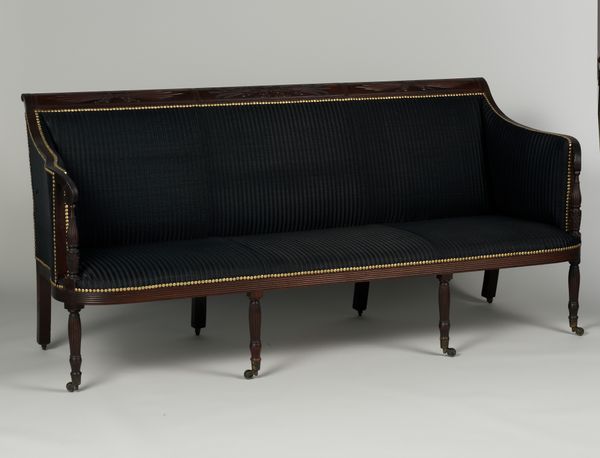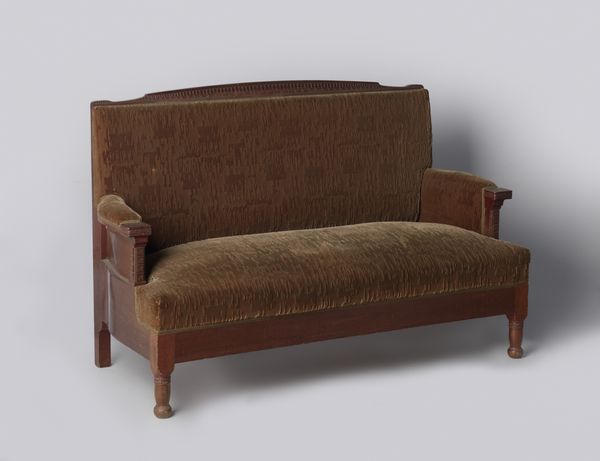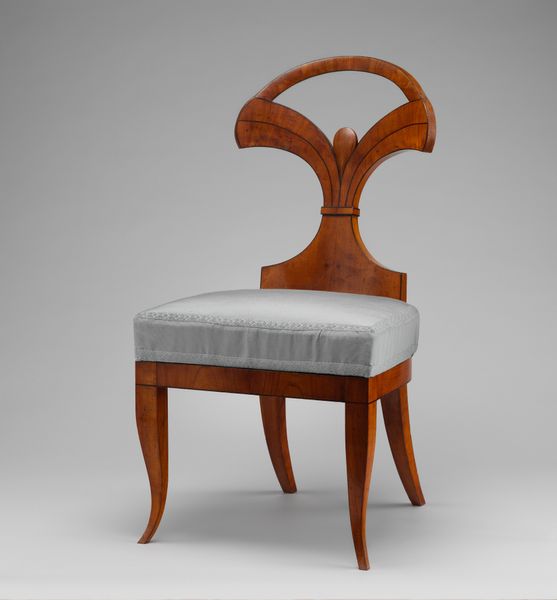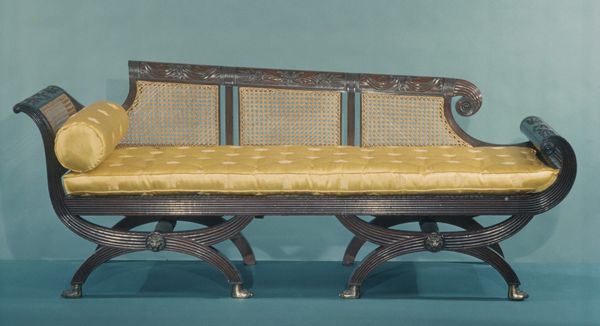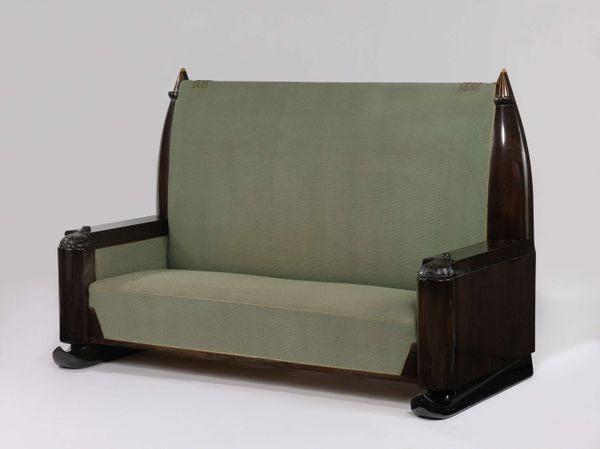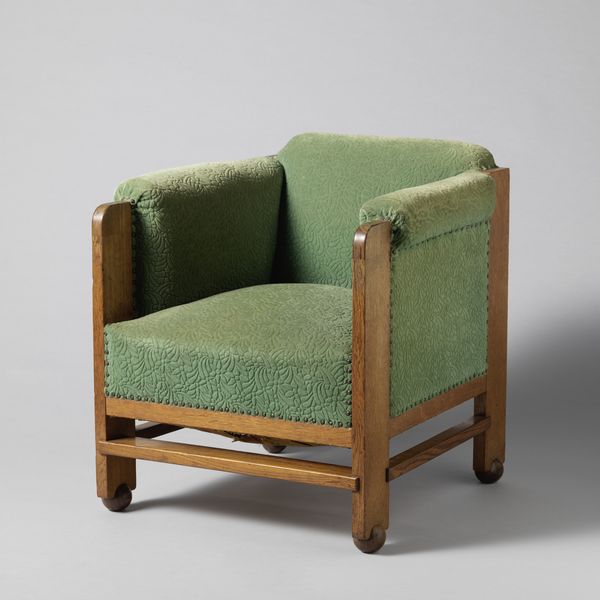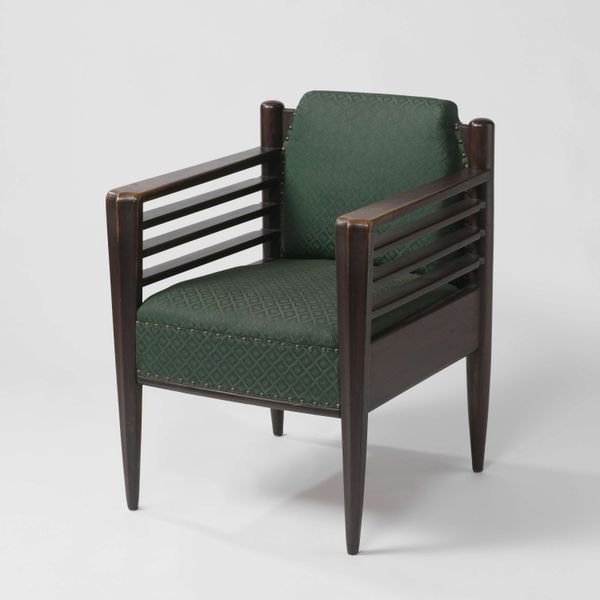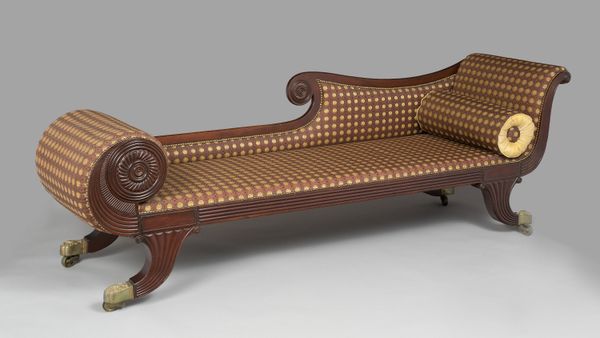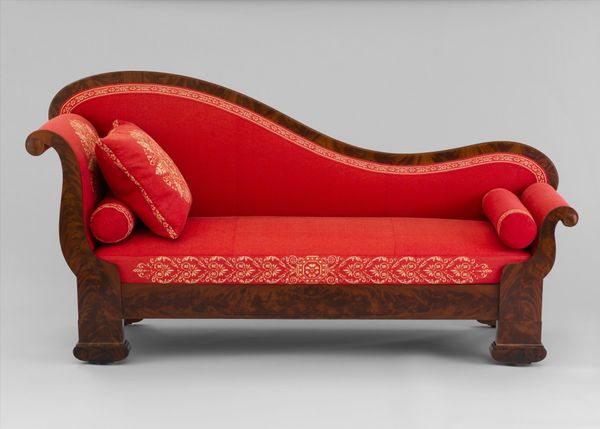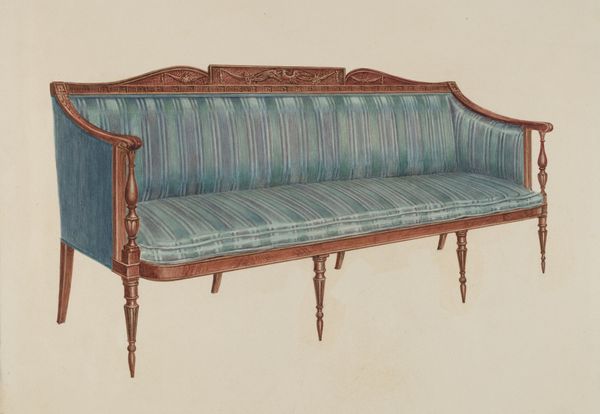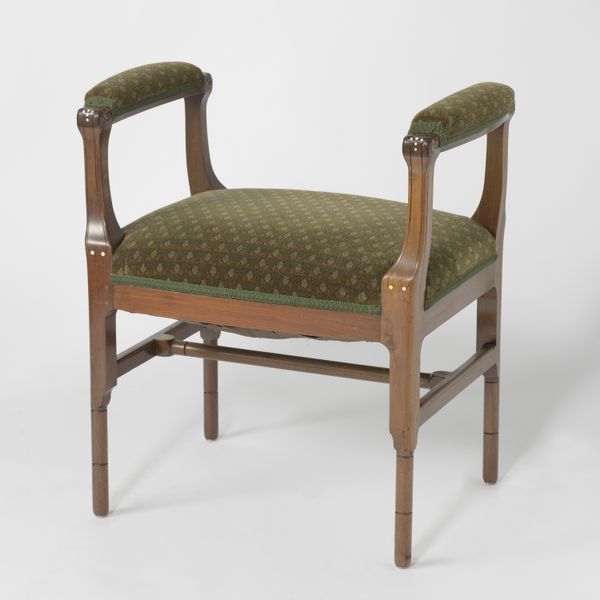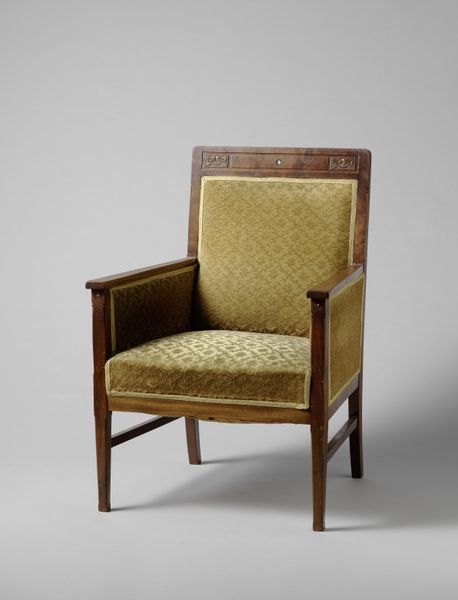
wood
#
furniture
#
landscape
#
form
#
romanticism
#
wood
#
decorative-art
#
architecture render
Dimensions: 90.2 × 183.3 × 58.4 cm (35 1/2 × 72 3/8 × 23 in.)
Copyright: Public Domain
Editor: Here we have an intriguing object, a wooden settee dating back to the period of 1815 to 1820. It’s part of the Art Institute of Chicago’s collection. I’m immediately struck by the juxtaposition of the carved details and the more functional, woven cane back. How might we interpret the choices in materials and production? Curator: Well, let’s consider the material reality of this settee. The wood, the cane, the fabric – all point to specific economic and social relationships. Who had access to these materials? Who was involved in the various stages of its creation, from the initial extraction of raw materials to the skilled labor of carving and weaving? Editor: That makes me wonder about the division of labor, and whether different artisans might have contributed to different parts. Curator: Precisely. The carved details on the legs and the crest rail suggest highly skilled labor, reflecting a significant investment in craftsmanship. This contrasts with the more readily available caning. Think about the hierarchy embedded in that production. Who benefitted from this object being made? What’s communicated by this mix of materials and production techniques? Editor: So, the settee becomes a sort of physical embodiment of social and economic structures of the time? Curator: Absolutely. The choice of materials, the process of creation – these are not just aesthetic decisions. They reflect power dynamics, trade networks, and the social standing of both the maker and the intended owner. Consider also what it means to produce luxury items when others barely subsisted. How are consumption and class woven into this piece? Editor: That gives me so much to think about; viewing furniture as a result of labor really changes the perspective. Curator: It moves our understanding beyond just form and style, offering an opportunity to analyze the deeper currents of history.
Comments
No comments
Be the first to comment and join the conversation on the ultimate creative platform.

